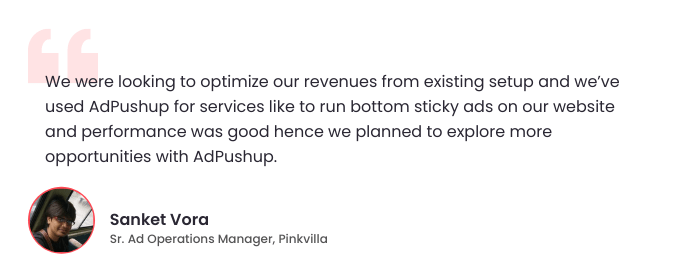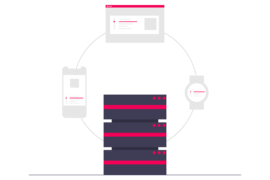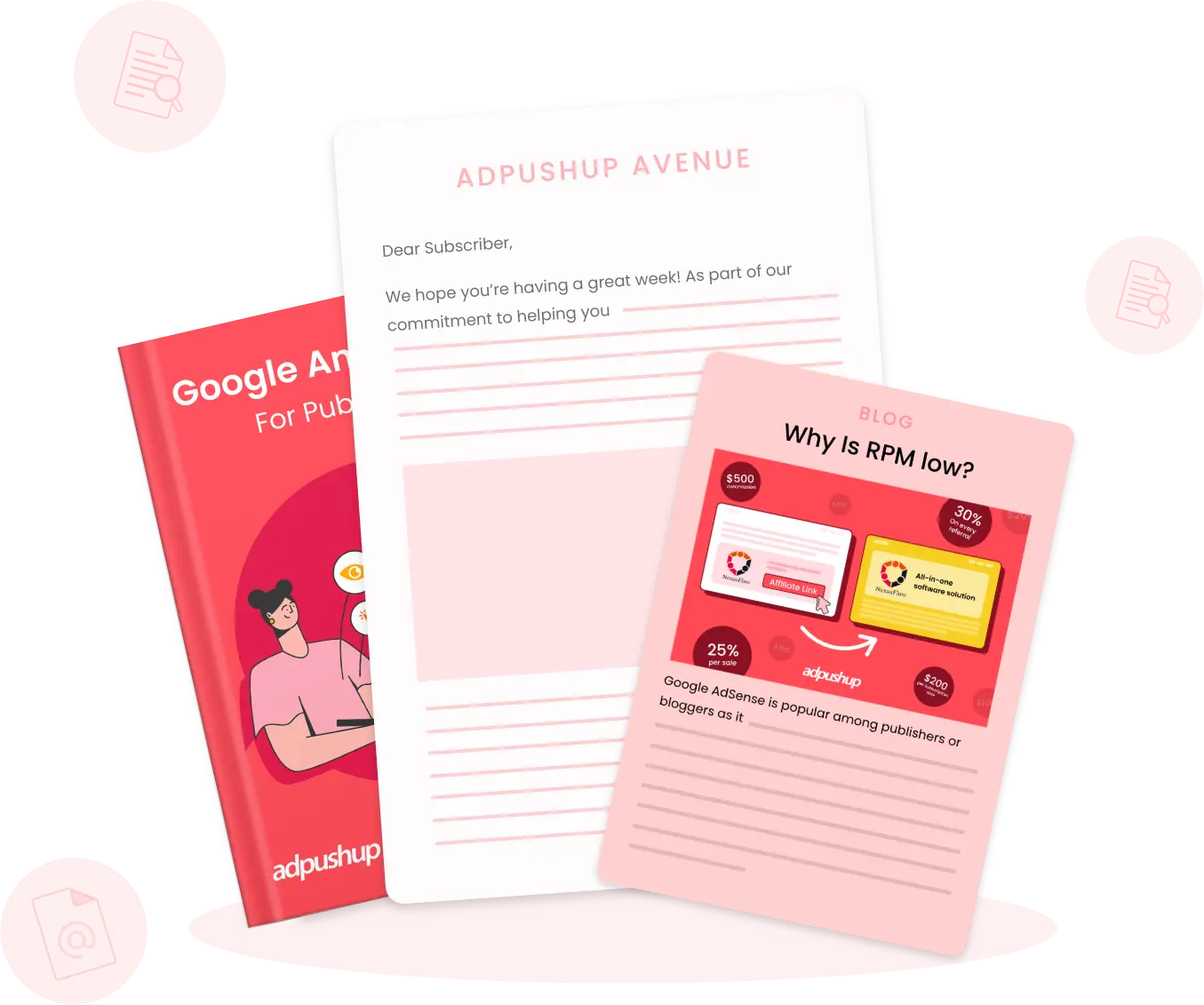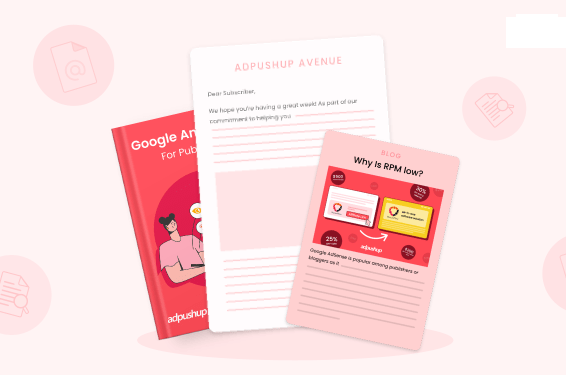Server-side header bidding (SSHB) is a programmatic advertising technique where the bids are processed on the ad server, as opposed to client-side header bidding.
In the world of programmatic advertising, the competition for ad impressions is fierce. With the widespread usage of programmatic advertising came better and more efficient techniques, one of them being server-side header bidding.
Most publishers and advertisers have turned to server-to-server header bidding. This is because server-side header bidding helps combat the primary issues of latency and page performance. It puts the auction into an external server-side platform instead of the client-side browser on the publisher’s website.
The technology allows connecting with servers for lightning-fast auctions and better transparency. It also gives an equal shot at success for both publishers and advertisers.
Server-side Header Bidding Explained
Server-side header bidding is a type of header bidding that enables ad buyers to bid on the ad inventory in real time. It is also known as server-to-server header bidding or S2S header bidding.
What’s unique about S2S header bidding is that the bids are processed on the server rather than the user’s browser, allowing for faster and more efficient ad serving. By definition, the bidding process taking place on the user’s browser is known as client-side header bidding.
AdPushup is a reliable ad partner that also offers client-side header bidding that you can work with to maximize your ad revenue.
Open bidding by Google is a great example of server-side header bidding, where the Google Ads Manager manages the auction.
How Server Side Header Bidding Works?
The SSHB works on a server, which reduces latency and allows for more demand partners to participate in the auction. It involves several steps:
1. The SSP sends an ad request to an external server hosting a header bidding wrapper.
2. The wrapper sends the ad request to multiple demand-side platforms (DSPs).
3. The DSPs receive and analyze the ad request to determine if they want to bid on the ad inventory.
4. If the DSP decides to bid, it sends its bid to the header bidding wrapper.
5. The wrapper receives the bids from the DSPs and selects the highest bid.
6. The winning bid is then returned to the publisher’s ad server, which displays the ad on the website in real time.
Server-Side Header Bidding vs Open Bidding
There are two popular methods of conducting programmatic advertising auctions. While both follow the same procedure (server-side auctions), the naming creates all the difference.
Server-to-server header bidding has become a popular method for programmatic advertising auctions. It allows for faster communication between servers, which increases the number of bid requests. It is essentially a broader concept that includes multiple ad servers across various ad exchanges. In S2S header bidding, types of auctions include open auction, private marketplace (PMP), and preferred deals.
However, with open bidding, it is only limited to Google Ads Manager. You can consider open bidding to be a subset of server-to-server header bidding as it only pertains to auctions via Google Adx and its pre-approved open bidding partners. In other words, open bidding is specifically developed by Google for open auctions within its walled gardens.

Role of Demand Side Platforms in Server-to-Server Header Bidding
The demand-side platforms (DSPs) in S2S header bidding allow advertisers to bid on ad inventory in real time. Also, the process of bidding for ad impressions occurs in the cloud, which allows for more efficient and scalable bidding. DSPs are one of the most important programmatic advertising platforms, along with supply-Side platforms and ad exchanges.
DSPs connect to the publisher’s ad server via API rather than using a browser-based solution. It allows for faster communication between the two parties, which leads to a transparent auction process.
It is recommended that publishers work with an experienced ad tech partner or ad network to ensure proper implementation of S2S bidding.
Server Side Header Bidding Benefits
While both server-to-server and client-side header bidding offer similar benefits, a few aspects of server-side header bidding sets it apart, reduced latency being the most dominant one.
For Publishers:
Increased Ad Revenue: Since server-to-server header bidding enables multiple DSPs to bid on inventory simultaneously, publishers can receive higher bids and increase their ad revenue.
Optimized Fill Rate: With server-to-server header bidding, more demand partners can bid on the given impression which can increase the chances of filling all the available ad inventory.
Reduce Latency: Eliminating the need for multiple JavaScript tags reduces the latency associated with traditional header bidding. It ensures that the ad is loaded faster, improving the user experience.
Faster Ad Decision-making: As the bids are processed by the ad server, it doesn’t have to wait for all demand partners to bid on the impression before making a decision, leading to faster ad serving.
For Advertisers:
Expanded Reach: Server-to-server header bidding allows advertisers to bid on premium and high-quality ad inventory that they couldn’t access via traditional methods.
Reduced Ad Fraud: Server-to-server header bidding helps reduce ad fraud, as it provides a more secure environment for advertisers. This is because SSHB (server-side header bidding) uses server-to-server auction technology that allows for more robust fraud detection and prevention measures.
Detailed Bid Insights: With S2S header bidding, advertisers can see the actual bids placed by each DSP. It also allows them to make more informed decisions about their ad campaigns.
Effective ROI: SSHB allows advertisers to access more data, such as first-party data, that can be used for better targeting. This can lead to more effective campaigns and higher ROI.
Challenges Associated With Server-Side Header Bidding
Being well-versed in the benefits of S2S header bidding for both publishers and advertisers might have convinced you to switch. But before making any decision, you should also know the downsides associated with server-to-server header bidding.
High Cost: Setting up server-to-server header bidding can be an expensive process that requires partnering with vendors, applying new technologies, and training. This is something that many publishers won’t be able to afford. Hence, making it hard for publishers to completely switch to server-to-server header bidding.
Complex Setup: Understanding the complex setup of S2S header bidding requires a good amount of technical knowledge. This form of bidding requires integration with another platform and handling multiple bids from demand partners. The complex setup can be hard for some publishers to handle at first.
Reduced Transparency: Since external vendors moderate S2S auctions, publishers don’t have much control over the whole process, which results in reduced visibility. Compared to client-side header bidding auctions, where publishers can see much more information, SSHB auctions can be challenging.
Limited Ad Targeting: With cookies not being a factor in server-to-server header bidding, ad targeting gets more limited than client-side header bidding auctions. This can greatly affect ad personalization and the overall ad revenue.
Server Side Header Bidding vs. Client Side Header Bidding
| Feature | Client-Side Header Bidding | Server-Side Header Bidding |
| Location of Auction | Takes place in the user’s browser. | Takes place on the publisher’s server. |
| Process | Multiple JavaScript tags from various DSPs compete in a real-time auction within the browser. | The publisher’s ad server communicates with DSPs, collects bids, and sends the highest bid to the website. |
| Latency | Higher latency due to multiple JavaScript tags being loaded in the browser. | Lower latency as the auction is handled on the server side, reducing the need for multiple JavaScript tags. |
| User Experience | User experience can be impacted due to increased load time. | Improved user experience with faster page load and better ad viewability. |
| Number of Demand Sources | Limited by the number of JavaScript tags that can be loaded. | Can access more demand sources as there is no limitation on the number of tags. |
| Ad Revenue Potential | Lower due to fewer demand sources. | Higher due to increased competition from more DSPs. |
Key Highlights
1. Server-side header bidding: It is a subset of header bidding wherein the auction takes place in an external server, unlike with client-side header bidding where the auction takes place on the user’s browser.
2. Working of S2S header budding: A request is sent to a server-side wrapper >> it connects to multiple DSPs >> bids are collected >> highest bid is sent back to the publisher’s ad server.
3. Open bidding vs Server-side header bidding: Open bidding is a subset of server-side header bidding that runs within Google’s walled garden and its third-party partners. However, S2S header bidding supports broader platforms and auction types.
4. Benefits of S2S header bidding: Higher revenue due to increased competition, better fill rates and faster ad loads, reduced latency, and improved user experience.
5. Challenges of S2S header bidding: Complex setup, high technical knowledge required, and limited targeting.
Frequently Asked Questions
Yes, traditional header bidding requires additional infrastructure and technical expertise to implement. Publishers and advertisers must weigh the potential benefits against the cost before implementing S2S.
Implementing server-to-server header bidding can be technically complex and may require additional resources. Additionally, managing multiple demand partners and optimizing bids can be time-consuming and require specialized expertise.
It depends on various factors, including the size of your audience, the complexity of your ad stack, and your goals for revenue growth and user experience. Consulting with an expert will help you determine if server-to-server header bidding is the right solution for your needs.
There is no correct answer to this; both server-side and client-side header bidding have their pros and cons, which put them above each other in different scenarios. To determine which bidding method is correct, publishers should evaluate their website and choose the most suitable one.
Yes, publishers can take the hybrid approach and run both server-side and client-side header bidding auctions on their sites.
Yes, small websites can run server-side header bidding for their inventories. But, this isn’t advised as the profit margin for small businesses is limited with S2S auctions.









